Joel Moreira about the new CAM: ‘I think it has huge potential to become a ‘beacon”
What made you want to get involved with the Youth Advisory Group? What were you expecting when you applied?
First and foremost, I wanted to take part in the Youth Advisory Group as a way of taking action and getting involved in constructing a centre for art – in this case, the Modern Art Centre (CAM) – and having a say in what I believe it should represent, whom it should represent, and how it should go about it.
What did you think the work of the Youth Advisory Group would involve?
As I understand it, CAM is currently in the process of reshaping its identity. In light of that, I’m very positive about the future, as I think the Group can help CAM reach out to public at large, across all classes and strata of society, with a truly democratic offering. I realise that’s a big ambition.
In your application, you talk a lot about ‘crossing frontiers’. What do you see as the key frontiers for cultural institutions and the general public? Or, to put it another way, what are the biggest barriers to overcome?
Socioeconomic conditions are the biggest obstacle. The usual kind of cultural offering isn’t reaching out to social housing neighbourhoods or resonating with people in the periphery of the big cities. I don’t believe that’s simply the fault of the institutions. To some extent, there’s a need of a certain level of education, literacy and social inclusion within the wider context, in order for those minority groups to access that kind of content. I’m talking about ethnic or cultural minorities, rather than economically disadvantaged people.
How would you describe your relationship with cultural institutions?
It’s an interesting one. I grew up in social housing, but I did have the privilege of leaving while I was still relatively young. When I did visit institutions like these, I would feel rather lost, as though these weren’t places for me to enter. Maybe it was because I wasn’t seeing other people like me there, or perhaps because the kind of talk and general environment were completely different from what I was accustomed to among my family and social circle. I had the privilege and luck of being able to visit the Calouste Gulbenkian Foundation at various points while growing up, but I never felt particularly at home in such places. Afterwards, when I was back among my peers, I struggled to express the way in which such places inspired me, or voice the ideas that I was picking up, whether from the Gulbenkian or theatre… The sole exception was cinema, which was a common point of reference for everyone, but when it came to the more traditional institutions, I felt really torn between two worlds. On the one hand was a place where I felt privileged to belong, a very highbrow place steeped in elitism. On the other was a place that was the very antithesis of this. I was acutely aware that I couldn’t bridge the gap between the two. Walking those two paths at once is something of a challenge.
To get into the details, what was your relationship with the Centro de Arte Moderna and the Calouste Gulbenkian Foundation like before you started working on the project?
I hadn’t visited the Centro de Arte Moderna all that often, but I was fairly familiar with the Calouste Gulbenkian Foundation itself. There were the gardens, and all the events going on there. I visited the Museum quite often, especially on Sundays, when admission is free. I always went to see the temporary exhibitions. I like taking people there, too, as it’s an interesting place to visit and chat about what’s on display, especially on the days when you can get in free.
I’d like to return to the subject of the Youth Advisory Group. As the name suggests, the Group is geared towards a young audience. How do you think an audience of young people differs from the rest? What makes them different from other visitors?
I love talking about young audiences and feel well equipped to represent their needs. Generally speaking, it’s a matter of the literacy you need to navigate these artistic environments, and conceptual art in particular. To give a specific example, it’s hard to move through an exhibition of contemporary conceptual art with the same ease that you would when going to the cinema to see a blockbuster or consuming more commercial media. I think there’s an immediate and significant barrier in that respect.
What kind of obstacles do you foresee in the specific case of an art exhibition that tends towards the more conceptual? What do you think we need to reflect on when it comes to specific aspects of that experience?
Imagine a conceptual art exhibition without any text on the walls. I think that sometimes we take it for granted that a certain type of visitor will be coming to see it, and will take away the intended message, find it interesting and be able to appreciate its artistic and intellectual thrust. The fact is that many people are first-time visitors to the Foundation. They come along with the idea of seeing what it’s all about, but they get an enormous shock. Most people I know come away feeling completely bewildered and disengaged. Ultimately, no one benefits from the encounter. As I see it, the institution assumes a pre-existing level of artistic literacy and specific knowledge in order for visitors to appreciate a certain type of art.

How would you picture an institution that responds properly to the needs of young people? What would the ideal institution look like?
Firstly, it’s about making sure it’s financially accessible. It wouldn’t necessarily have to be free for everyone, but it could have staggered admission fees. That would be a great start. How would you do it? I’m not sure exactly. It’s bound to be complicated. But that would be the dream!
Secondly, the Gulbenkian’s various collections and curated exhibitions would be supplemented by themes that reflect current issues in everyday society.
Another idea would be to reconcile major artistic tastes and trends with the Foundation’s more intellectual and humanitarian elements. I don’t follow football, but imagine that there’s a major football match broadcasted here. This would draw in people who wouldn’t otherwise come and now would be here enjoying the different areas. I know that football and Gulbenkian are unlikely bedfellows, but doing something that linked the two could extend a welcome to visitors who have come here to watch a match and happen to notice that there’s something else taking place here on the same day. Maybe they’re curious enough to come in, and find that they enjoy the space. I’ve used a football match as an example, but an event like a street fair organised with other institutions, like Anjos 70, would work just as well. Connecting various trends and events with Gulbenkian could be a worthwhile way of getting the word out and reaching more people.
Essentially, it’s about leveraging a general focus of interest to entice people to come along. We appeal to them through something that they know.
Yes. For many people that would be the first point of contact.
To go back to the Youth Advisory Group, how does your academic and personal background feed into this project?
Above all else, I’m drawing upon my cultural roots, which come from two different places. There’s my Timorese heritage – one of the smallest minority groups in Portugal – and my Cape Verdean background. In addition, I bring the experience of the periphery, social housing and communities that have traditionally lacked access to this type of intellectual pursuits.
In terms of my academic career, I studied for my degree at the Faculty of Fine Arts in Lisbon. I feel very privileged to have done so, but there have definitely been times when I’ve felt as though I’m bashing my head against a brick wall. I’ve managed to develop a certain aesthetic and artistic sensibility, but precisely because I’m still developing and working my way along that road, I believe I have a certain insight into the points of greatest friction when people encounter such spaces. Speaking of academia, I’m currently studying modern and contemporary history, including the establishment of museums and similar institutions, so I bring an informed understanding and political sensitivity to bear on the subject. I’m interested in social happenings and the way society perceives these types of institutions and the role that they should play.
You’ve had two sessions so far. What are your immediate impressions of the Group?
I think it’s a very interesting group of people, from all sorts of different fields, with an incredible wealth of academic knowledge, aesthetic sensibilities and emotional intelligence. There’s a real sense of openness, dedication and determination to be transparent and share whatever we want. This has created a space where we all feel comfortable and free to talk freely and think outside the box, without any restrictions. That environment alone is reward enough for me. Everything else is a bonus.
What have you been able to do, learn and discuss in those two sessions?
The first session was about getting to know one another a little better. In the second, we visited the site to get a sense of what the new CAM space would be like. After that, we discussed various ideas and compared the CAM to other institutions we’d visited. What is it that we like about those institutions? What draws us to the Gulbenkian? We considered what it was that appealed to us about other places, but which the Gulbenkian might lack. And it goes without saying that we’ve also been exploring our personal connection with art, especially our earliest memories of art and how it has impacted us over time.
You mentioned that you went to visit the CAM construction site. What did you think of the building that’s taking shape?
I think it has huge potential to become a beacon for the vision and new identity of the CAM. I love the transparent design and being able to see right into the building from the moment we enter the park. I’m curious to see how the Engawa project will evolve. It’s neither public nor private, but simply a welcoming space that defies definition. Even though it’s still under construction, it’s obviously a fantastic investment in the identity that is being built. I think it’s remarkable.
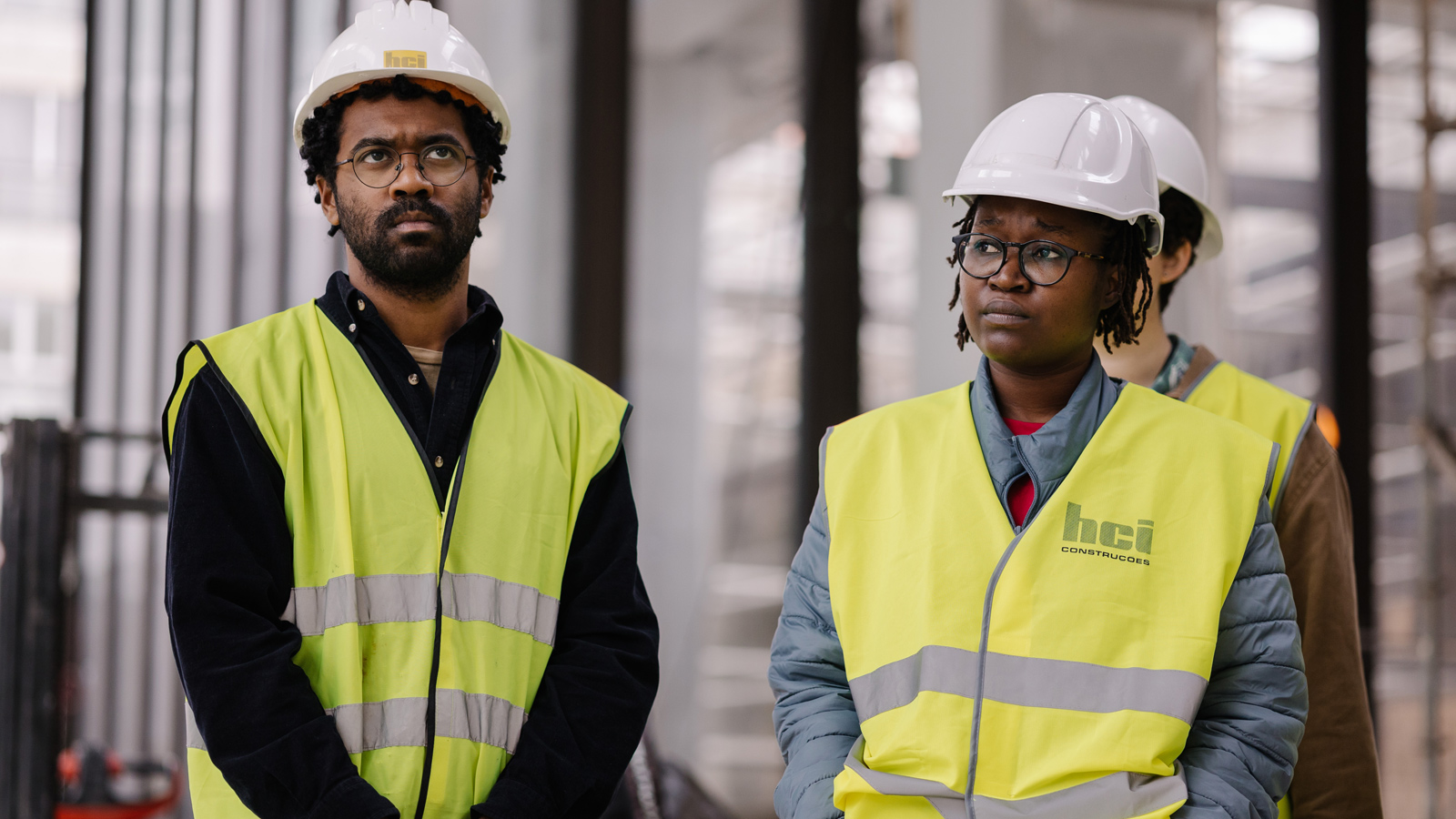

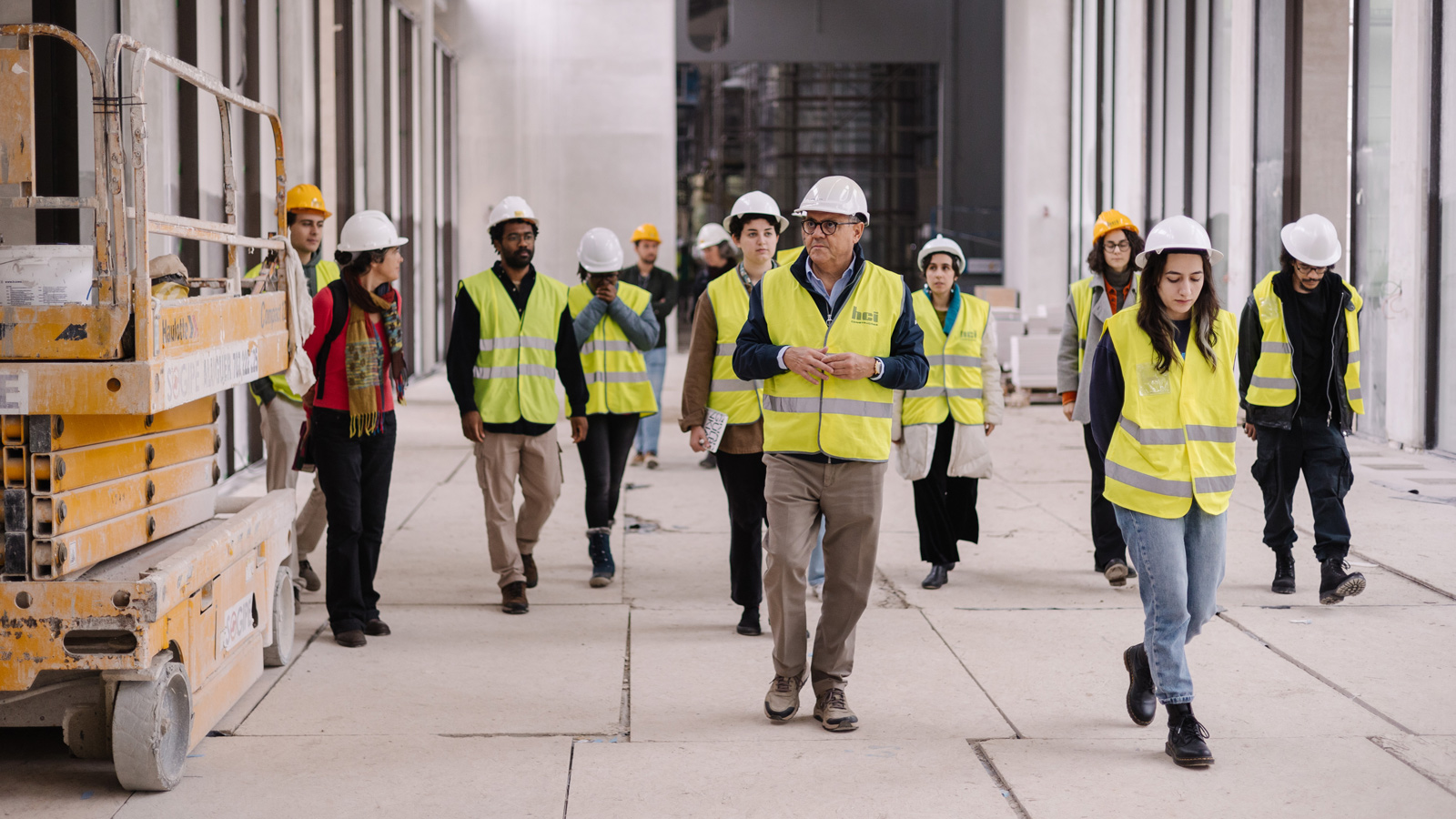
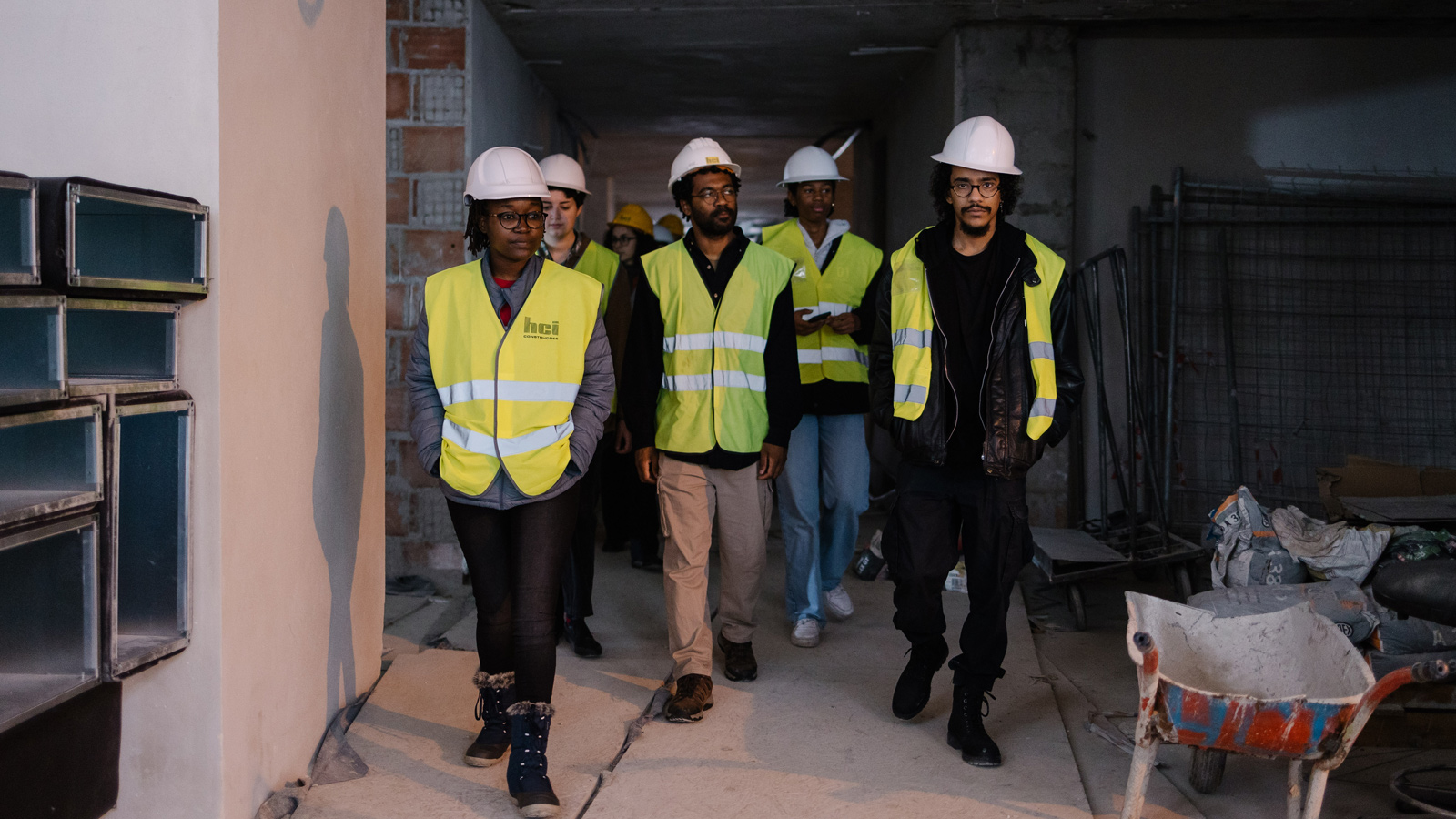
You associate the role of a cultural institution with a kind of civic activism and have mentioned the need to deal with issues that prove divisive in society. What kind of themes would you like the CAM to explore?
Firstly, and this may be a somewhat controversial opinion, I believe that although the institution is primarily a cultural entity, it can never be apolitical. After all, it has to have a message, and having a message makes it political. I don’t believe in neutrality: if you profess to be neutral, that lack of a message is a message in itself. As such, it’s better to stand up for what we believe in, rather than staying on the sidelines.
Secondly, it’s about inclusion and creating a culturally coherent space. Lisbon is an extremely multicultural city, but there’s not much intermingling; it doesn’t extend to interculturality. The same goes for Portugal as a whole, but the issue is felt most keenly in the capital. I think this should be one of the institution’s flagship messages.
I’m also in favour of the emphasis on mental health. We’re living in a society where individual and collective life is increasingly being debased. This is still largely being swept under the carpet, but there is growing clamour to raise our banners and start the pushback.
Last but not least, at the root of all this is the need to promote critical thinking.
Can you think of an institution, initiative or individual that has addressed these sorts of issues effectively?
Yes. The first one that comes to mind is the Coletivo Fumaça, which focuses mainly on journalism. They made a podcast series called “O Desassossego” [“Disquietude”], which deals specifically with mental health and features a wide range of real people. It demonstrates that such problems can affect absolutely anyone. Mental health is an issue that cuts across socioeconomic divides.
You talk a lot about creating and supporting communities. How can an art centre – and this one in particular – help to build communities?
To start off with, it can do this by showcasing the cultures themselves by putting on appealing curated exhibitions that emanate from those communities. To give an example, we have a number of South Asian communities in Lisbon. Why not use an intermediary to study the cultural landscape and invite people to talk about themselves and their take on things, as opposed to what we’re used to: people who aren’t part of these communities holding forth on how they perceive them. I believe that when the communities themselves become the curators, they open up a space for dialogue and true exchange.
You were part of a project called “Passa a Palavra” [“Spread the Word”].
That’s right.
Does your experience with this project have any bearing on your aspirations for CAM? Is there a link between the project’s activities and CAM’s aims?
Definitely, especially when it comes to fostering critical thinking.
“Passa a Palavra” was an ambitious project that started out as a platform for discussing divisive topics. It brought together a few students who wanted to highlight and debate tough issues. The take-up wasn’t as great as we would have liked. That may have been down to the scope for action, which was far smaller than anything CAM could achieve. By creating a space where students can share their concerns, then throwing up other concerns as a counterpoint, we end up questioning everything.
Implementing that sort of project at CAM could lead to action on an entirely different scale. In this case, it wouldn’t be for a select few, but for anyone who wanted to create a platform. Transposing this kind of project to Gulbenkian would create a space for debate in the form of free, public assemblies open to everyone, in the true spirit of the republic.
You were each asked to choose two works from the collection. You chose Hora Mágica by Maria Benamor and A Serra by Mimi Fogt. Why did you choose these two pieces?
I should probably provide a little context here. The CAM catalogue is far vaster than I was expecting, so settling on two pieces was far from easy.
I ended up choosing two pieces that I had never seen in person, by artists that I wasn’t familiar with. In the midst of everything, Hora Mágica stood out to me. I’m drawn to a more naturalistic style and depictions of nature. This piece seemed a good approach to figurative painting, and has something very innocent about it. The way the artist depicts the elements reminded me of Fauvism – one of my favourite styles. I think this naive, almost childish way of picturing the world makes it truly remarkable. Gazing upon it was like being transported back to my childhood and the way I saw things then.
I don’t know whether I would describe the other painting, A Serra, as quite so figurative, but it’s a mesmerising piece, nonetheless. It has various shades of green and sweeps of colour that remind me of natural landscapes. I spotted it while leafing through the catalogue and it was practically love at first sight. I’m not sure exactly why. I thought, “Yep, that’s the one.”
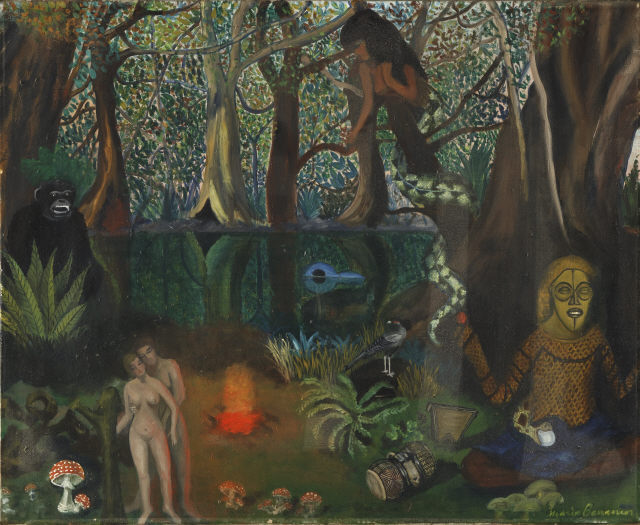
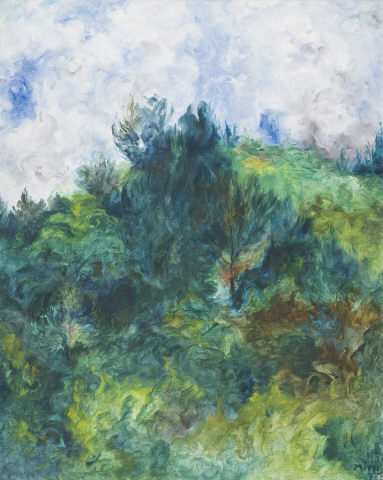
To finish off, what are your hopes for the reopening of the CAM?
My hopes centre around what I believe the CAM can be – a place for dialogue and exchange, where everyone feels welcome. We’ve heard plenty of accounts of people not feeling comfortable or not represented in any way. I hope that this will be an intercultural space where people feel truly at home and free to be their genuine selves. I believe that fostering that transparency and ease will feed into the great task of raising the banners that I mentioned just now. Without that sense of ease, I think it’s unlikely that people will want to open up and voice what they really think.
Suggestions
Books: Walden or Life in the Woods, by Henry David Thoreau; All About Love, by Bell Hooks; and The Little Prince, by Antoine de Saint-Exupéry.
Songs: Survival and Babylon System, by Bob Marley; and KOKOROKO, by KOKOROKO
Artists: Mário Domingues and Diogo Gazella Carvalho
Films: Princess Mononoke, by Hayao Miyazaki; and Atlanta (series), by Donald Glover

